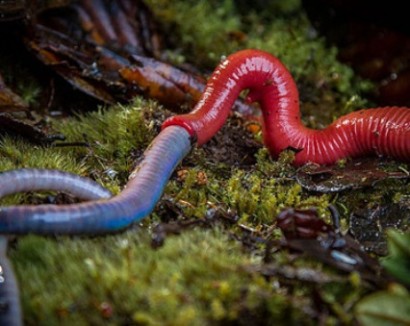Giant flesh-eating leech filmed swallowing huge earthworm like spaghetti
 It resembles a monster from a b-list horror film but deep in the forests of Borneo this giant leech really exists and is a deadly predator. The creature is so new to science that it does not yet have a taxonomic name. It is known to the tribes of Mount Kinabalu as the ‘Giant Red Leech.’ It was filmed for the first time by BBC filmmakers for the new series ‘Wonders of the Monsoon.’ The Giant Red Leech is one of the biggest in the world. The specimen captured on camera was around 50cm long but experts believe they could grow larger. They have grown so big that they no longer simply suck blood but now actively hunt giant blue worms and suck them down like spaghetti. The worm it is eating is a whopping 70cm. The new footage shows the leech detecting a worm’s trail and following the scent like a sniffer dog. When it encounters its prey it quickly latches on and moves its lips up and down the iridescent blue body. "It was either searching for an end to grab, or was working out whether it was too big to eat” said documentary director Paul Williams. "When it found an end it started to suck. It was incredible" The worm tries to pull away but slowly the leeches lips inch forward until with a slurp, the worm is gone. "The result is that we could confirm the predatory behaviour of a rarely-seen and unidentified species for the first time.” said added Williams. Finding the species on Mount Kinabalu, the biggest mountain in Borneo, was a huge challenge and the team worked with ecologist Alim Bium to locate the leech. "If you want to film a predator the best thing to do is to find its prey” said Williams, but it took the team several weeks of searching before an extremely heavy rainstorm eventually brought worms out in huge numbers. The red leeches were not far behind. “By working with Alim we were able to sufficiently light the area of forest to record the predation as it unfolded” said Paul. “It was exciting and fascinating, as he was making his new scientific discovery, we were documenting the behaviour for the very first time” |


















